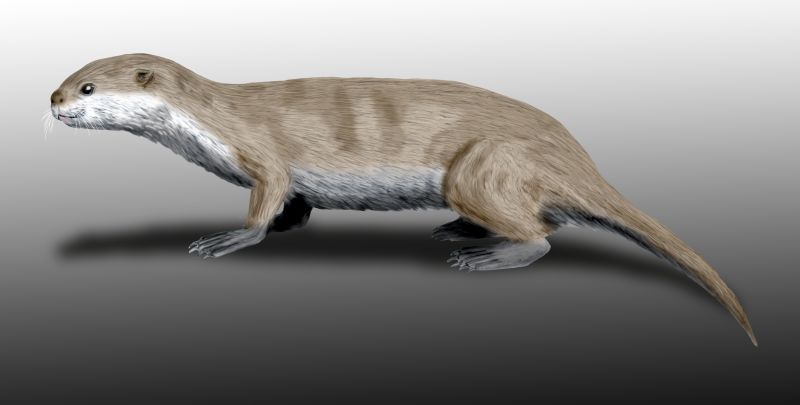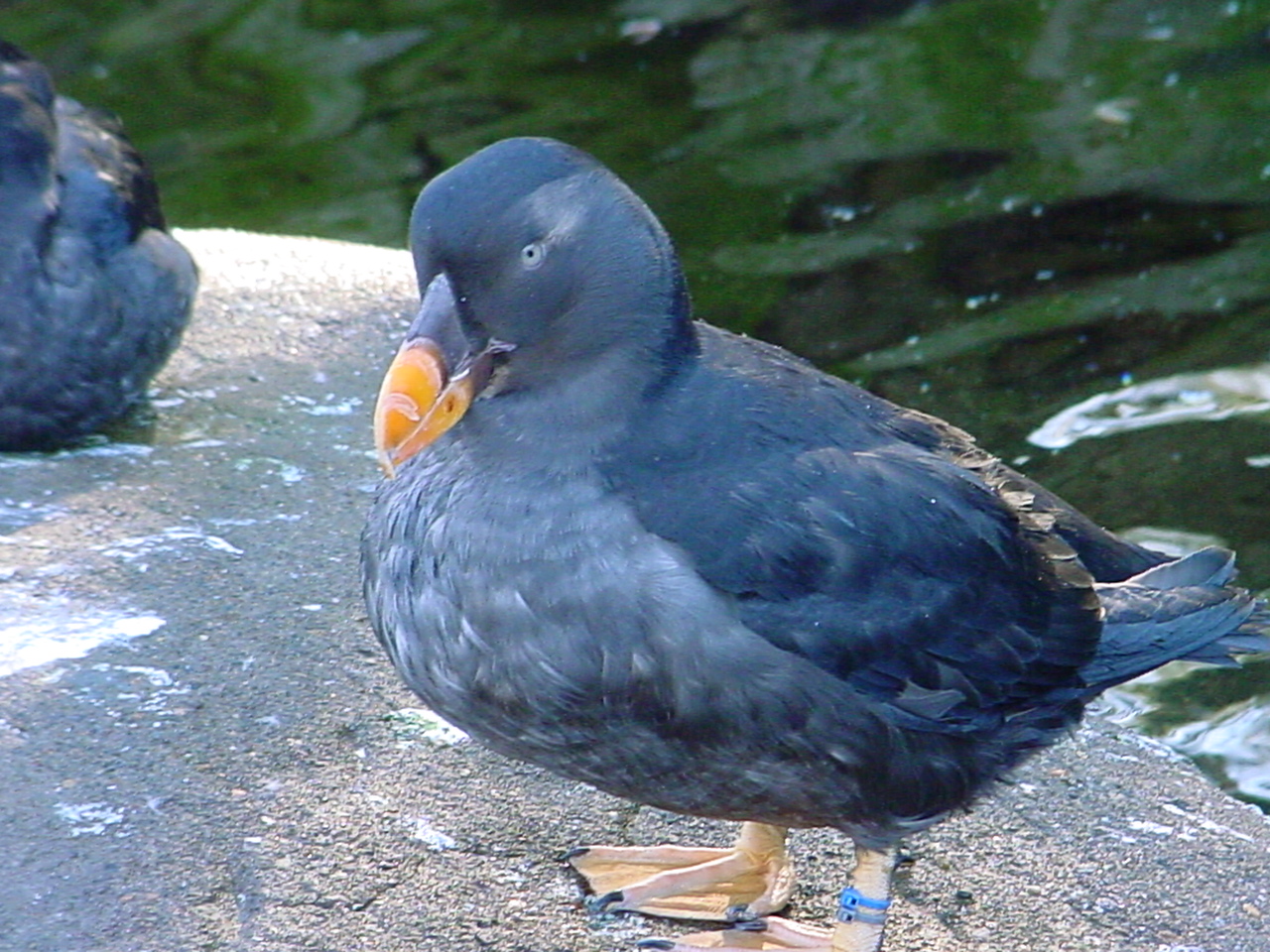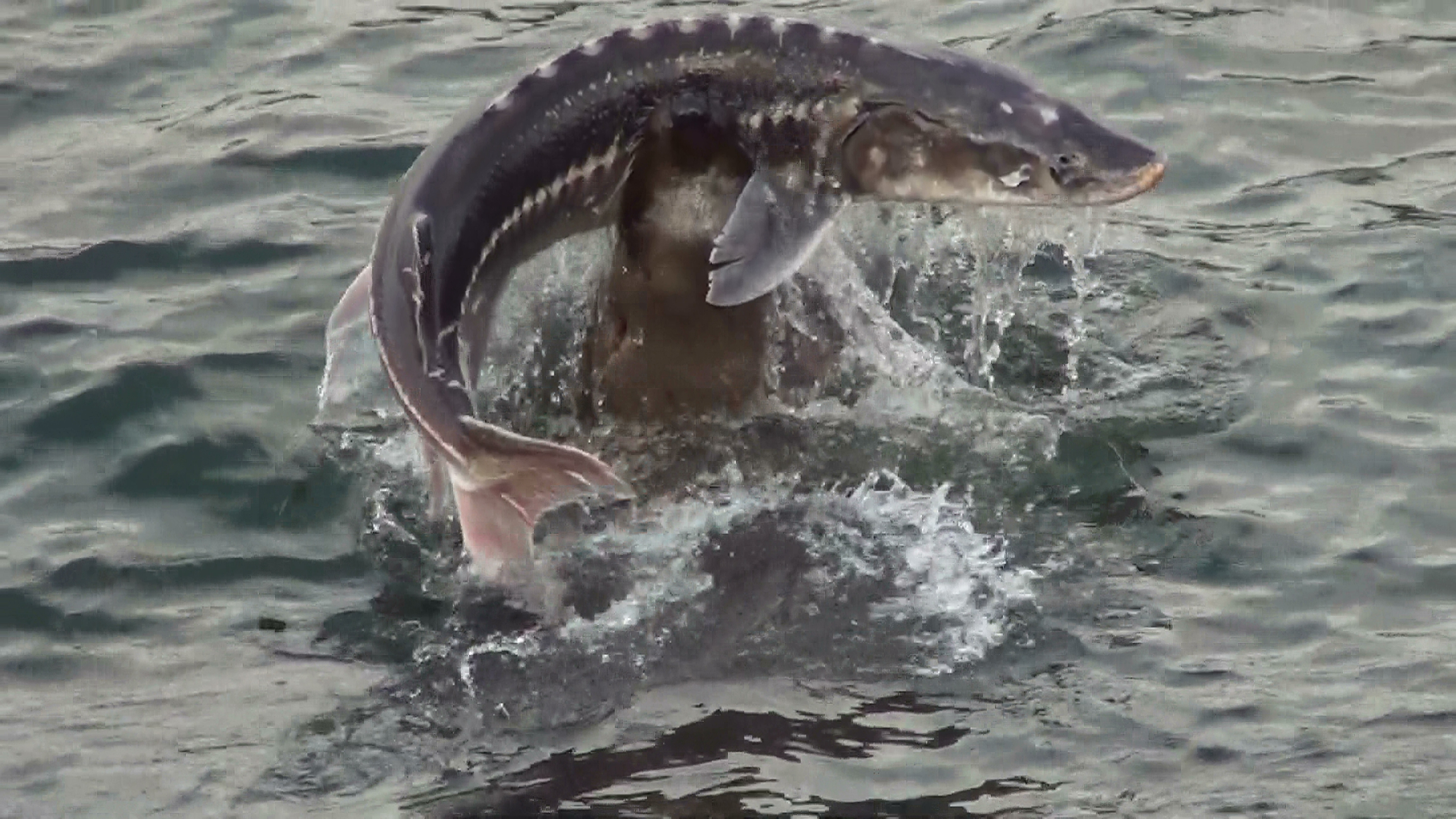|
Iony Island
Iony Island (), or Jonas' Island, formerly Ostrov Svyatogo Iony ( Saint Jonas' Island), is a small island in the Sea of Okhotsk. Administratively, Iony belongs to the Khabarovsk Krai of the Russian Federation. Geography Iony Island is the only island in the Sea of Okhotsk that is located in the open sea. All other islands in the Okhotsk Sea are either coastal or belong to the Kuril island chain. It is in length, wide, and rises to a height of . The island is barren and conical in shape with sheer cliffs rising to heights of . Several rocks lie off the island, including a group of four high rocks about to the north-northwest and several detached rocks to the south. The island is often enveloped in dense fog due to cold bottom water upwelling to the surface. The flood tidal current off the island sets west, while the ebb sets to the east or east-southeast. These currents may reach up to 1.5 to 2 knots during spring tides and create numerous eddies, small whirlpools, and tid ... [...More Info...] [...Related Items...] OR: [Wikipedia] [Google] [Baidu] |
Island
An island or isle is a piece of land, distinct from a continent, completely surrounded by water. There are continental islands, which were formed by being split from a continent by plate tectonics, and oceanic islands, which have never been part of a continent. Oceanic islands can be formed from volcano, volcanic activity, grow into atolls from coral reefs, and form from sediment along shorelines, creating barrier islands. River islands can also form from sediment and debris in rivers. Artificial islands are those made by humans, including small rocky outcroppings built out of lagoons and large-scale land reclamation projects used for development. Islands are host to diverse plant and animal life. Oceanic islands have the sea as a natural barrier to the introduction of new species, causing the species that do reach the island to evolve in isolation. Continental islands share animal and plant life with the continent they split from. Depending on how long ago the continental is ... [...More Info...] [...Related Items...] OR: [Wikipedia] [Google] [Baidu] |
Pinniped
Pinnipeds (pronounced ), commonly known as seals, are a widely range (biology), distributed and diverse clade of carnivorous, fin-footed, semiaquatic, mostly marine mammals. They comprise the extant taxon, extant families Odobenidae (whose only living member is the walrus), Otariidae (the eared seals: sea lions and fur seals), and Phocidae (the earless seals, or true seals), with 34 extant species and more than 50 extinct species described from fossils. While seals were historically thought to have descended from two ancestral lines, molecular phylogenetics, molecular evidence supports them as a monophyletic group (descended from one ancestor). Pinnipeds belong to the suborder Caniformia of the order Carnivora; their closest living relatives are musteloids (Mustelidae, weasels, Procyonidae, raccoons, skunks and red pandas), having diverged about 50 million years ago. Seals range in size from the and Baikal seal to the and southern elephant seal. Several species exhibit ... [...More Info...] [...Related Items...] OR: [Wikipedia] [Google] [Baidu] |
Leach's Storm Petrel
Leach's storm petrel or Leach's petrel (''Hydrobates leucorhous'') is a small seabird of the tubenose order. It is named after the British zoologist William Elford Leach. The scientific name is derived from Ancient Greek. ''Hydrobates'' is from ''hydōr'' "water", and ''batēs'' "walker", and ''leucorhous'' is from ''leukos'', "white" and ''orrhos'', "rump". It was formerly defined in the genus '' Oceanodroma'' before that genus was synonymized with '' Hydrobates''. It breeds on inaccessible islands in the colder northern areas of the Atlantic and Pacific Oceans. It nests in colonies close to the sea in well concealed areas such as rock crevices, shallow burrows, or even logs. It lays a single white egg, which often has a faint ring of purple spots at the large end. This storm petrel is strictly nocturnal at the breeding sites to avoid predation by gulls and skuas, and even avoids coming to land on clear, moonlit nights. The largest colony of Leach's storm petrels can be found o ... [...More Info...] [...Related Items...] OR: [Wikipedia] [Google] [Baidu] |
Thick-billed Murre
The thick-billed murre or Brünnich's guillemot (''Uria lomvia'') is a bird in the auk family (Alcidae). This bird is named after the Danish zoologist Morten Thrane Brünnich. The very deeply black North Pacific subspecies ''Uria lomvia arra'' is also called Pallas' murre after its describer. Taxonomy The thick-billed murre was formally described in 1758 by the Swedish naturalist Carl Linnaeus in the tenth edition of his ''Systema Naturae''. He placed it with the other auks in the genus '' Alca'' and coined the binomial name ''Alca lomvia''. Linnaeus specified the type locality as boreal Europe but this was restricted in 1921 to Greenland by the German ornithologist Ernst Hartert. The thick-billed murre is now placed together with the common murre in the genus '' Uria'' that was introduced in 1760 by the French zoologist Mathurin Jacques Brisson. The genus name is from Ancient Greek ''ouria'', a waterbird mentioned by Athenaeus. The specific epithet ''lomvia'' is a Swedish ... [...More Info...] [...Related Items...] OR: [Wikipedia] [Google] [Baidu] |
Common Murre
The common murre or common guillemot (''Uria aalge'') is a large auk. It has a Subarctic, circumpolar distribution, occurring in low-Arctic and boreal waters in the North Atlantic and North Pacific. It spends most of its time at sea, only coming to land to breed on rocky cliff shores or islands. Common murres are fast in direct flight but are not very agile. They are highly mobile underwater using their wings to 'fly' through the water column, where they typically dive to depths of . Depths of up to have been recorded. Common murres breed in Bird colony, colonies at high densities. Nesting pairs may be in bodily contact with their neighbours. They make no nest; their single egg is Avian incubation, incubated between the adult's feet on a bare rock ledge on a cliff face. Eggs hatch after ~30 days incubation. The chick is born Down feather, downy and can regulate its body temperature after 10 days. Some 20 days after hatching, the chick leaves its nesting ledge and heads for the s ... [...More Info...] [...Related Items...] OR: [Wikipedia] [Google] [Baidu] |
Tufted Puffin
The tufted puffin (''Fratercula cirrhata''), also known as crested puffin, is a relatively abundant medium-sized pelagic seabird in the auk family (Alcidae) found throughout the North Pacific Ocean. It is one of three species of puffin that make up the genus ''Fratercula'' and is easily recognizable by its thick red bill and yellow tufts. Description Tufted puffins are around in length with a similar wingspan and weigh about three-quarters of a kilogram (1.6 lbs), making them the largest of all the puffins. Birds from the western Pacific population are somewhat larger than those from the eastern Pacific, and male birds tend to be slightly larger than females. They are primarily black with a white facial patch, and, typical of other puffin species, feature a very thick bill, primarily red with some yellow and occasionally green markings. Their most distinctive feature and namesake are the yellow tufts () that appear annually on birds of both sexes as the summer reprod ... [...More Info...] [...Related Items...] OR: [Wikipedia] [Google] [Baidu] |
Horned Puffin
The horned puffin (''Fratercula corniculata'') is an auk found in the North Pacific Ocean, including the coasts of Alaska, Siberia and British Columbia. It is a pelagic seabird that feeds primarily by diving for fish. It nests in colonies, often with other auks. It is similar in appearance to the Atlantic puffin, its closest relative of the North Atlantic, but differs by a "horn" of black skin located above the eye, present in adult birds. Etymology The binomial name of this species, ''Fratercula corniculata'', comes from the Medieval Latin ''fratercula'', meaning “friar”; their black-and-white plumage resembling the robes of monks. ''Corniculata'' means “horn-shaped” or “crescent-shaped”, in reference to the black horn above the bird's eye. The vernacular name ''puffin'' – puffed in the sense of swollen – was originally applied to the fatty, salted meat of young birds of the unrelated species, the Manx shearwater (''Puffinus puffinus''), formerly known as the "M ... [...More Info...] [...Related Items...] OR: [Wikipedia] [Google] [Baidu] |
Crested Auklet
The crested auklet (''Aethia cristatella'') is a small seabird of the family Alcidae, distributed throughout the northern Pacific and the Bering Sea. The species feeds by diving in deep waters, eating krill and a variety of small marine animals. It nests in dense Bird colony, colonies of up to 1 million individuals in the Bering Sea and the Sea of Okhotsk. It often breeds in mixed-species colonies with the least auklet, a smaller Conspecificity, congener. The species is known for its sexual ornaments, found in both males and females. These include colorful plumage with a forehead crest, a striking scent recalling citrus fruit, and a loud trumpet call, all of which appear to have evolved through sexual selection. The total population is around 6 million, almost half in North America. It is in general considered to be of least concern, though the Alaskan population faces additional threats from predation and oil spills. Taxonomy The crested auklet was first species description, d ... [...More Info...] [...Related Items...] OR: [Wikipedia] [Google] [Baidu] |
Least Auklet
The least auklet (''Aethia pusilla'') is a seabird and the smallest species of auk. It is the most abundant seabird in North America, and one of the most abundant in the world, with a population of around nine million birds. They breed on the islands of Alaska and Siberia, and spend the winter close to the edge of the ice sheet. Their largest colonies are on the Aleutian Islands, St. Lawrence Island and Little Diomede Island. Diet and feeding Least auklets feed predominantly on calanoid copepods, particularly those of the genus ''Neocalanus''. They also eat euphausiids, pteropods and other zooplankton species. They hunt for these in stratified waters caused where upwelling and thermoclines cause these prey items to be tightly clumped together. Like all auks they are pursuit divers, using their wings to provide thrust and "fly" under the water. They are voracious predators, consuming 86% of their body weight each day. Breeding Least auklets are highly colonial, nesting in r ... [...More Info...] [...Related Items...] OR: [Wikipedia] [Google] [Baidu] |
Whiskered Auklet
The whiskered auklet (''Aethia pygmaea'') is a small seabird of the auk family. It has a more restricted range than other members of its genus, ''Aethia'', living only around the Aleutian Islands and on some islands off Siberia (like Commander Islands), and breeding on these islands. It is one of the smallest alcids, only the closely related least auklet being smaller. Its name is derived from the long white feathers on its face that are part of its breeding plumage. The whiskered auklet is a poorly studied species and much research needs to be undertaken on the species. It was originally described as two different species, from specimens collected at different ends of its range, however research has shown that it is a single species with clinal variation along its range. It is not thought to undertake migration, but instead attends its breeding islands year round, and has been shown to roost on land all year round, an unusual trait in the family. Whiskered auklets lay a single ... [...More Info...] [...Related Items...] OR: [Wikipedia] [Google] [Baidu] |
Northern Fulmar
The northern fulmar (''Fulmarus glacialis''), fulmar, or Arctic fulmar is an abundant seabird found primarily in subarctic regions of the North Atlantic and North Pacific oceans. There has been one confirmed sighting in the Southern Hemisphere, with a single bird seen south of New Zealand. Fulmars come in one of two colour morphs; a light one in temperate populations, with white head and body and grey wings and tail, and a dark one in arctic populations, which is uniformly grey; intermediate birds are common. Svensson, L., Mullarney, K., & Zetterström, D. (2009) '' Collins Bird Guide'', ed. 2. Though similar in appearance to gulls, fulmars are in fact members of the family Procellariidae, which includes petrels and shearwaters. The northern fulmar and its sister species, the southern fulmar (), are the only extant members of the genus . The fulmars are in turn a member of the order Procellariiformes, and they all share certain identifying features. First, they have nasal pa ... [...More Info...] [...Related Items...] OR: [Wikipedia] [Google] [Baidu] |
Steller Sea Lion
The Steller sea lion (''Eumetopias jubatus''), also known as Steller's sea lion or the northern sea lion, is a large, near-threatened species of sea lion, predominantly found in the coastal marine habitats of the northeast Pacific Ocean and the Pacific Northwest regions of North America, from north-central California to Oregon, Washington and British Columbia to Alaska. Its range continues across the Northern Pacific and the Aleutian Islands, all the way to Kamchatka, Magadan Oblast, and the Sea of Okhotsk, south to Honshu's northern coastline. It is the sole member of the genus ''Eumetopias'', and the largest of the so-called eared seals (Otariidae). Among pinnipeds, only the walrus and the two species of elephant seal are bigger. The species is named for the naturalist and explorer Georg Wilhelm Steller, who first described them in 1741. Steller sea lions have attracted considerable attention in recent decades, both from scientists and the general public, due to signific ... [...More Info...] [...Related Items...] OR: [Wikipedia] [Google] [Baidu] |









